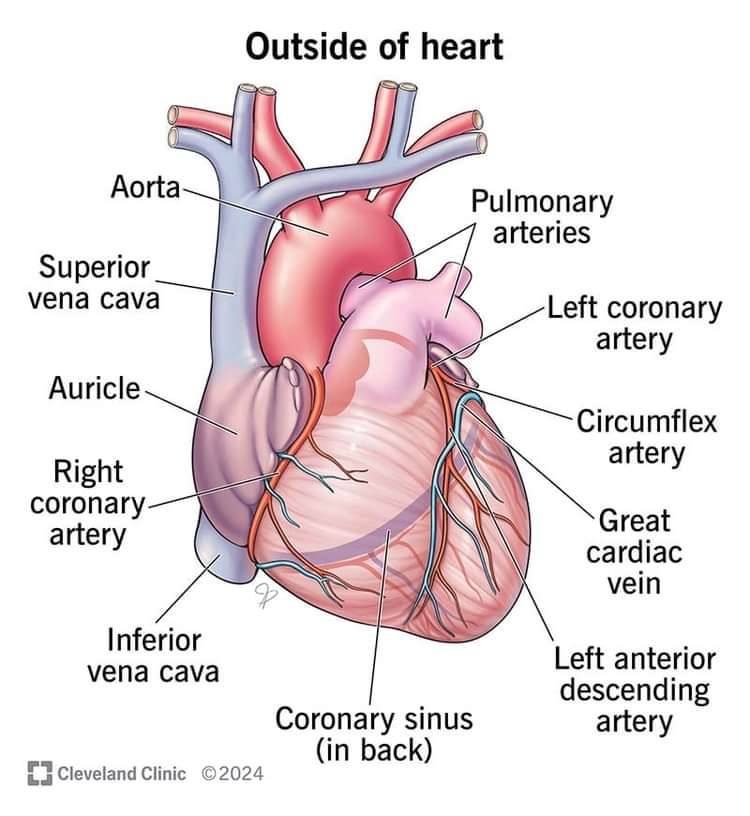The heart is a vital organ that plays a crucial role in our bodies. It's located in the chest, slightly on the left side, and is roughly the size of a clenched fist. The main function of the heart is to pump blood throughout the body, supplying oxygen and nutrients to all the cells and organs.
The heart is made up of four chambers: two atria and two ventricles. The atria receive blood from the body and lungs, while the ventricles pump the blood out to the rest of the body. The heart also has valves that ensure blood flows in the right direction and prevents any backflow.
The right side of the heart receives deoxygenated blood from the body and pumps it to the lungs, where it picks up oxygen and gets rid of carbon dioxide. The left side of the heart receives oxygenated blood from the lungs and pumps it to the rest of the body.
The heart has its own electrical system that controls its rhythm and ensures it beats in a coordinated manner. It starts with an electrical signal in the sinoatrial (SA) node, also known as the heart's natural pacemaker. This signal spreads through the atria, causing them to contract and pump blood into the ventricles. Then, the signal reaches the atrioventricular (AV) node, which sends the signal to the ventricles, causing them to contract and pump blood out of the heart.
The heart works tirelessly throughout our lives, beating around 100,000 times a day! It adapts to our body's needs, pumping faster during exercise and slower at rest. Taking care of our heart is essential for overall health. Regular exercise, a balanced diet, managing stress, and avoiding smoking are some ways to keep our hearts happy and healthy.
One important function is the circulation of blood. The heart pumps oxygen-rich blood from the left side to the rest of the body through a network of blood vessels called arteries. These arteries branch out into smaller vessels called capillaries, where oxygen and nutrients are delivered to the body's tissues.
After the tissues have received oxygen and nutrients, the blood returns to the heart through veins. The veins carry the oxygen-depleted blood to the right side of the heart, which then pumps it to the lungs for oxygenation.
Another crucial function of the heart is maintaining blood pressure. Blood pressure is the force exerted by blood against the walls of blood vessels. The heart generates this pressure by contracting and relaxing rhythmically. This helps ensure that blood reaches all parts of the body, supplying oxygen and nutrients to keep everything running smoothly.
The heart also plays a role in regulating body temperature. When we exercise or are exposed to hot conditions, the heart pumps more blood to the skin's surface, allowing heat to dissipate and cool the body down.
Additionally, the heart has an incredible ability to adapt. It can grow stronger and more efficient with regular exercise, leading to improved cardiovascular fitness. This means that the heart can pump more blood with each beat, reducing the strain on the cardiovascular system.
Taking care of our heart is essential for overall well-being. Eating a balanced diet rich in fruits, vegetables, whole grains, and lean proteins can help maintain heart health. Regular physical activity, such as brisk walking or jogging, strengthens the heart and improves its efficiency. Managing stress, getting enough sleep, and avoiding smoking are also important for keeping our hearts in top shape.


